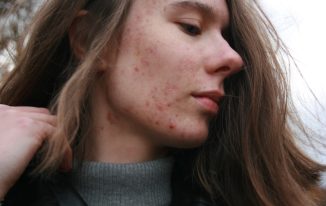Maintaining your dog’s skin health is essential for their overall well-being. Skin conditions are among the most common health issues in dogs, affecting their comfort and quality of life. These issues can arise from a variety of sources, making it important for pet owners to stay informed. Recognizing the signs early and understanding the causes can help in providing effective treatment. This blog explores common skin conditions in dogs, their symptoms, and treatment options to ensure your furry friend remains healthy and happy.

Identifying the Signs of Skin Problems
One of the first indicators that your dog may be experiencing skin issues is changes in their behavior, such as frequent scratching or licking. When a dog is scratching themselves excessively, it often signals an underlying problem. Other signs include redness, swelling, hair loss, and unusual odors from the skin. It’s important to observe these symptoms closely, as they can vary depending on the specific condition. Early detection allows for timely intervention, preventing minor issues from escalating into more serious health concerns.
Allergic Reactions and Their Impact
Allergies are a leading cause of skin problems in dogs. They can be triggered by various factors, including food ingredients, environmental elements like pollen and dust mites, and contact with certain materials or chemicals. Dogs with allergies may exhibit symptoms such as itching, redness, and inflammation. Managing allergies typically involves identifying and eliminating the allergen, which may require dietary changes or modifications to the dog’s environment. In some cases, veterinarians may prescribe antihistamines or corticosteroids to alleviate symptoms and reduce inflammation.
Parasites: Fleas, Ticks, and Mites
Parasites like fleas, ticks, and mites are common culprits behind many skin conditions in dogs. Flea infestations can lead to severe itching, redness, and secondary infections due to excessive scratching. Ticks not only irritate but can also transmit diseases that affect the skin and overall health. Mites, responsible for conditions like mange, cause intense itching and hair loss. Preventative measures, such as regular use of flea and tick preventatives, maintaining a clean environment, and routine veterinary check-ups, are necessary for controlling parasite-related skin issues.

Bacterial and Fungal Infections
Bacterial and fungal infections are another significant cause of skin problems in dogs. Bacterial infections, often secondary to other skin conditions, can result in pustules, abscesses, and oozing lesions. Fungal infections, such as ringworm, present as circular patches of hair loss, redness, and scaling. Treatment typically involves the use of antimicrobial or antifungal medications, either topically or orally, depending on the severity of the infection. Maintaining good hygiene and addressing any underlying issues promptly can prevent these infections from recurring.
Hormonal Disorders Affecting Skin
Hormonal imbalances can have a profound impact on a dog’s skin health. Conditions like hypothyroidism and Cushing’s disease disrupt normal skin function, leading to symptoms such as thinning hair, excessive shedding, and increased susceptibility to infections. Diagnosing hormonal disorders involves blood tests and a thorough veterinary examination. Treatment usually includes hormone replacement therapy or medications to regulate hormone levels, which can help restore healthy skin and coat over time.
Dietary Influences on Skin Health
A dog’s diet plays a significant role in maintaining healthy skin and a shiny coat. Nutritional deficiencies, particularly in essential fatty acids, vitamins, and minerals, can lead to dry skin, excessive shedding, and increased susceptibility to skin conditions. Ensuring a balanced diet with high-quality ingredients supports skin health and strengthens the immune system. In some cases, veterinarians may recommend dietary supplements, such as omega-3 fatty acids, to address specific skin issues and promote overall health.
Preventative Care and Maintenance
Regular grooming, including bathing and brushing, helps remove dead hair, dirt, and potential allergens from your dog’s coat and skin. Routine veterinary check-ups allow for early detection of any skin abnormalities and timely treatment. Maintaining a clean living environment and managing your dog’s stress levels can contribute to healthier skin. By prioritizing preventative measures, you can reduce the likelihood of your dog developing skin problems and ensure they remain comfortable and healthy.
Skin conditions in dogs are prevalent but manageable with proper care and attention. Recognizing the signs, understanding the causes, and implementing appropriate treatments are essential steps in maintaining your dog’s skin health. From allergies and parasites to hormonal imbalances and dietary factors, various elements can affect your dog’s skin. By staying vigilant and proactive, you can address these issues promptly, ensuring your canine companion enjoys a healthy, itch-free life. Regular veterinary visits and a commitment to preventative care will go a long way in keeping your dog’s skin in optimal condition. Taking these steps not only improves your dog’s quality of life but also strengthens the bond you share.



